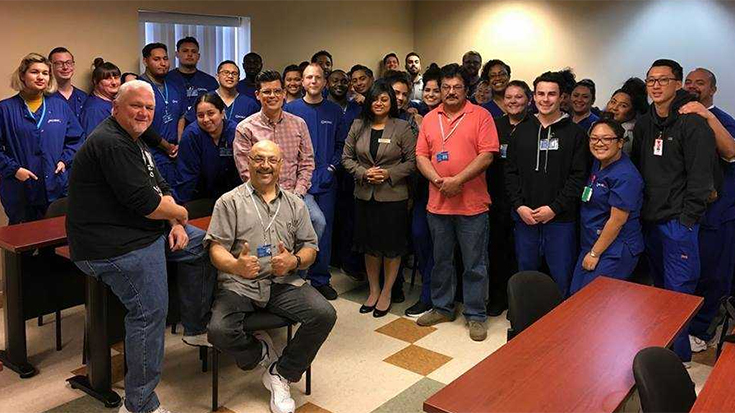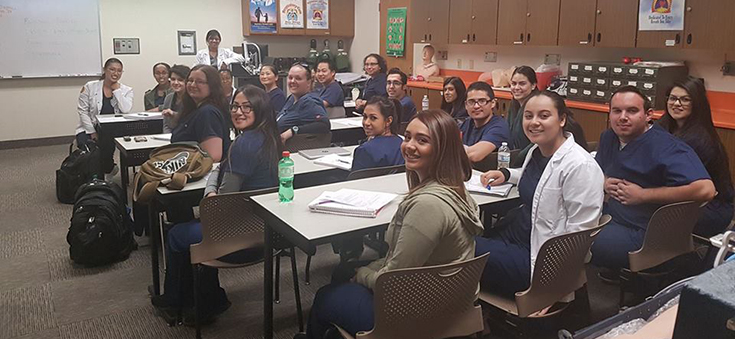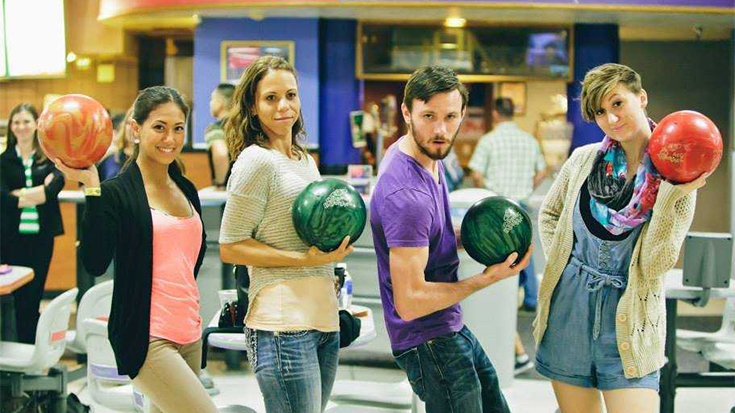
By Sherleen Bose, BA, RCP, RRT, CHT
New responsibility brings new challenges

In August 2014, California Society for Respiratory Care (CSRC) President Michael Madison, MBA, RRT, called and told me that the CSRC was planning to create a new region and would like to appoint me as the region president. I thought that was a great idea and accepted the offer. I soon realized the huge responsibility of my mission.
My first challenge was to find other volunteers like me who were willing to donate their time and effort and become involved. The few that participated were very enthusiastic and passionate about the profession.
That was all I needed for encouragement.
Soon the region became very active. We started to organize different social and educational events.
Keep the momentum going
Eventually, I realized that to keep the momentum going, we need to get the newbies involved.
There are currently 19 public and 19 private RT programs in California. According to the CoARC outcome data, there are approximately 1,100 total graduates annually. With about 24,000 active RCPs in California, only about 10 percent of them are members of the CSRC.
Somehow, we are failing to effectively connect with them.
I quickly realized that the biggest challenge was that the students did not really know much about the professional organizations and their leaders. They know about the CSRC and the AARC, but not what we do or most importantly why we do it.
The membership committee of the region decided that the best way to reach out to them is to visit all eight schools in the region at least once a year.

Sharing the importance of membership
For the last four years, we have visited all the schools in the region, periodically speaking to the students about the professional organizations and why it is important for them to become members. The program and clinical directors of the schools have been instrumental in the process by scheduling these visits with us.
When we make these visits, the goal is to give them a little history of these professional organizations and let them know our mission, vision, and values. Our main focus is on telling them why it is important to join as a member.
These visits usually last anywhere from 30 minutes to an hour.
We always have the students ask us questions about these organizations to find out how to get more involved.
Most of the volunteers that we now have in our region that are directly involved with the CSRC are recent graduates within the last three or four years.
Encourage participation
Besides visiting the schools, our goal is also to organize events that would encourage students to participate and network with others.
We organize the regional sputum bowl event every year and hold an annual bowling event as well. We call it Bronchial Bowling!

Bronchomania is another fun social event we organize annually on the first day of respiratory care week.
We invite recruiters, managers, directors, and supervisors from the local hospitals to attend these events. The goal is to have the students join us and get an opportunity to network with potential future employers.
We also invite schools that offer bachelor’s and master’s degree in respiratory therapy as exhibitors to these events. Students that are interested in pursuing higher education find this very beneficial. Additionally, we offer annual scholarship awards to the students.
Recently, we visited 7 schools in the region during the AARC Virtual Lobby campaign and achieved a 100 percent participation from each school.
This has been a great source of pride in our region.
Comments from our visits
“During your visit, I was inspired to further my education in respiratory and become a continuous member of the CSRC. I have learned through your visit that volunteering and staying involved with new and upcoming advances in Respiratory can be beneficial not only for myself, but also patients and the Respiratory field as a whole,” said Amy Wolter from Crafton Hills College.
Nicholas Birnbaum from Victor Valley College also finds these visits beneficial. He said, “Before Sherleen came to visit our students at Victor Valley College, I only briefly heard of the CSRC. Thanks to her for coming and visiting. We truly learned of the importance of the CSRC, and what this organization does for the field of respiratory care. She informed us of the scholarship opportunities, educational events, and political goals of the CSRC. With her help, I am now a part of the CSRC and will continue to be.”
Denise Roman, another student from the same college stated, “Before Sherleen visited us at our school, I will be honest and say I was not exactly sure what the CSRC did or the importance of it, other than knowing it was an organization revolved around respiratory therapy. Once she visited us, it really opened my eyes to how important it is for myself and my classmates to be involved with it and clarified everything the CSRC is and does. It also helped me put a face to the organization, so it made it more familiar to me, which motivated me to want to go to the events that are planned.”
Lead with our ‘why’
As leaders of the profession, it is important for us to go out there and have direct interactions with the future therapists. Not only does it give them a face to connect with the names, it also grants us the opportunity to tell them our personal stories and inspire them to join the professional organization.
Simon Sinek is one of my favorite motivational speakers, and one of his best sellers is, Start With Why: How Great Leaders Inspire Everyone to Take Action. In this book he claims that to inspire others, we need to think, act, and communicate starting with WHY. Why am I a member of the professional organizations?
In my experience, when I can show them the reason why I get involved, it motivates the students to get involved as well.
People don’t buy what we do; they buy why we do it. Therefore, adaptive leadership works extremely well here, as the students get involved not because they have to, but because they want to.
Sherleen Bose, BA, RCP, RRT, CHT, first began her involvement with the CSRC when she was in school participating in the student sputum bowl competition. That is how she got involved with the AARC. From then on, she would participate in the state and national sputum bowl, either as a competitor or a spectator. All of that changed when she received a phone call from the CSRC President Michael Madison, inviting her to become a region president.